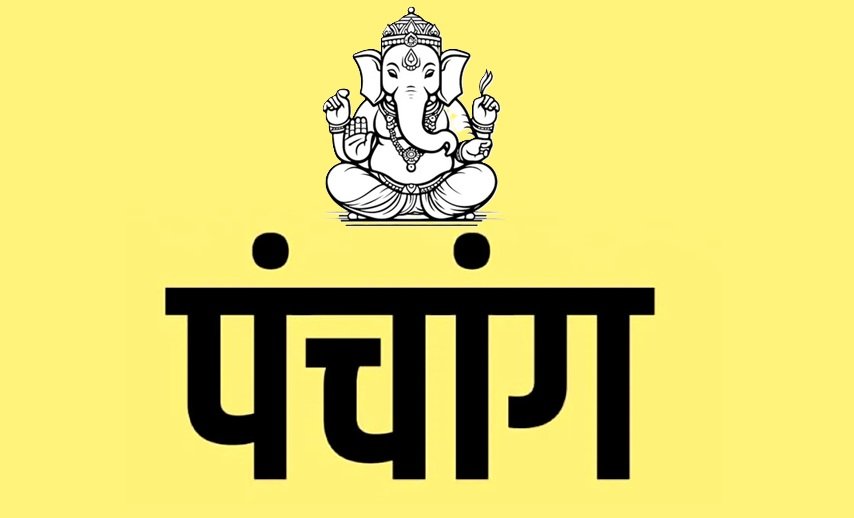
The Hindu calendar, deeply rooted in India’s cultural and religious traditions, plays a significant role in determining auspicious dates for festivals, rituals, and daily activities. Unlike the Gregorian calendar, the Hindu calendar follows a lunisolar system where the day begins with the local sunrise and ends at the next day’s sunrise. Due to variations in sunrise timings across different geographical locations, Hindu calendars are specific to each region. This is why it is essential to use a location-based Hindu calendar for accuracy.
Structure of the Hindu Calendar
A distinctive feature of the Hindu calendar is its division into five essential components known as Panchang (Sanskrit: Pancha meaning ‘five’ and Ang meaning ‘parts’). These elements are fundamental in determining favorable and unfavorable time periods for religious observances and activities. The five components are:
- Tithi (Lunar Day): The lunar day or Tithi is a key aspect of the Hindu calendar. A month consists of 30 Tithis, which are divided into two phases:
- Shukla Paksha (waxing moon)
- Krishna Paksha (waning moon) Each Tithi lasts for a specific duration and influences rituals, fasts, and festivals.
- Nakshatra (Lunar Mansion): The celestial sphere is divided into 27 Nakshatras or constellations. The moon travels through each Nakshatra in approximately a day. Each Nakshatra has a ruling deity and governs various aspects of life, including personality traits, compatibility, and auspicious events.
- Yoga (Luni-Solar Day): Yoga is calculated based on the angular relationship between the sun and the moon. There are 27 different Yogas, each with distinct characteristics that influence day-to-day activities and auspicious timings.
- Karana (Half Tithi): A Karana represents half of a Tithi, meaning two Karanas are found in each Tithi. There are 11 types of Karanas, with 7 occurring repeatedly and 4 considered fixed. Karanas play a role in determining the success of an activity.
- Var (Weekday Name): The Hindu week consists of seven days, each governed by a planetary deity:
- Sunday (Ravivara) – Sun (Surya)
- Monday (Somavara) – Moon (Chandra)
- Tuesday (Mangalavara) – Mars (Mangal)
- Wednesday (Budhvara) – Mercury (Budha)
- Thursday (Guruvara) – Jupiter (Guru)
- Friday (Shukravara) – Venus (Shukra)
- Saturday (Shanivara) – Saturn (Shani)
Panchang – The Detailed Hindu Almanac
A Hindu calendar that includes all five components mentioned above is known as Panchang. This comprehensive system provides precise details about celestial movements and their impact on human life. Traditionally, Panchangs are prepared by experienced astrologers using complex astronomical calculations. The Panchang is essential for selecting auspicious timings (Muhurta), avoiding inauspicious periods (Rahu Kaal), and determining the dates of Hindu festivals and religious observances.
Variations in Hindu Calendars
India follows multiple versions of the Hindu calendar, primarily classified into two major systems:
- Lunisolar Calendar (Amanta & Purnimanta Systems):
- In the Amanta system, the lunar month ends with the new moon (Amavasya), followed in states like Maharashtra, Gujarat, Karnataka, and Andhra Pradesh.
- The Purnimanta system follows a month ending on a full moon (Purnima), widely used in North India.
- Solar Calendar:
- Used in Tamil Nadu, Kerala, and West Bengal, this system follows the movement of the sun rather than the moon, with months based on solar transitions.
Panchangam in South India
In South India, Panchang is referred to as Panchangam. Despite regional variations, the core elements remain the same. South Indian Panchangams often emphasize solar-based calculations, particularly in Tamil and Malayalam calendars. It plays a vital role in religious ceremonies, astrology, and temple festivals.
Importance of Panchang in Daily Life
The Panchang serves as a guide for Hindus in various aspects of life, including:
- Determining auspicious dates for weddings, housewarming ceremonies, and religious festivals.
- Fixing Muhurta (favorable time) for important activities like business deals and travel.
- Avoiding inauspicious time slots such as Rahu Kaal and Yamaganda Kaal.
- Planning spiritual observances, fasts (Vrat), and charitable activities.
Conclusion
The Hindu calendar, with its intricate calculations and deep connection to celestial movements, continues to be an integral part of Indian culture. The Panchang provides valuable insights into time and its influence on human life, guiding millions in their religious and everyday activities. Understanding its components allows individuals to align their actions with cosmic rhythms, ensuring harmony, prosperity, and spiritual growth.






